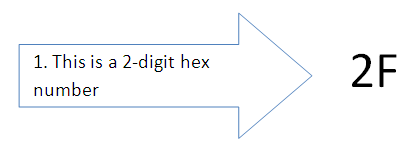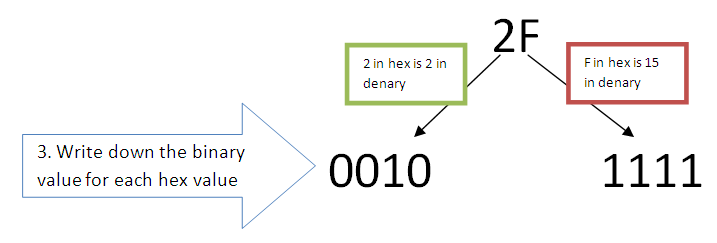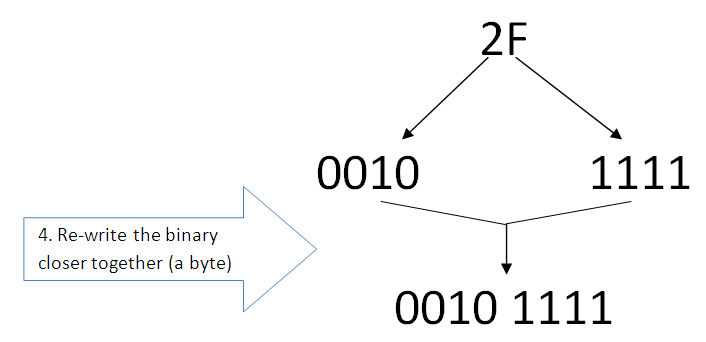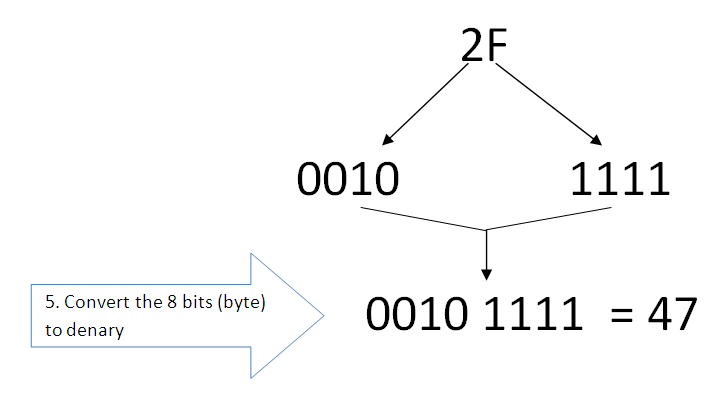Hexadecimal to two places
Learning basic hex is easy, if you don't know how to do it, click here. If you have learned hex 1-15 then lets add another layer of complexity, for example the single digit "A" in hex is 10 in denary which is 1010 in binary . However what about two digit hex "2F" in hex equal?
How to convert 2 digit hex to denary (and binary)
The hex number 2F equals 47 in denary, but how?
This table converts a denary number to the binary and hexadecimal value
Denary/decimal/base 10 |
Binary |
Hexadecimal |
zero |
0000 |
zero |
1 |
0001 |
1 |
2 |
0010 |
2 |
3 |
0011 |
3 |
4 |
0100 |
4 |
5 |
0101 |
5 |
6 |
0110 |
6 |
7 |
0111 |
7 |
8 |
1000 |
8 |
9 |
1001 |
9 |
10 |
1010 |
A |
11 |
1011 |
B |
12 |
1100 |
C |
13 |
1101 |
D |
14 |
1110 |
E |
15 |
1111 |
F |
Hexadecimal to one place
Loading KS3 Hexadecimal
Hexadecimal to denary
Loading Hexadecimal to denary
Hexadecimal to two places
Loading Hexadecimal
Hexadecimal above F
Loading Hexadecimal above F




